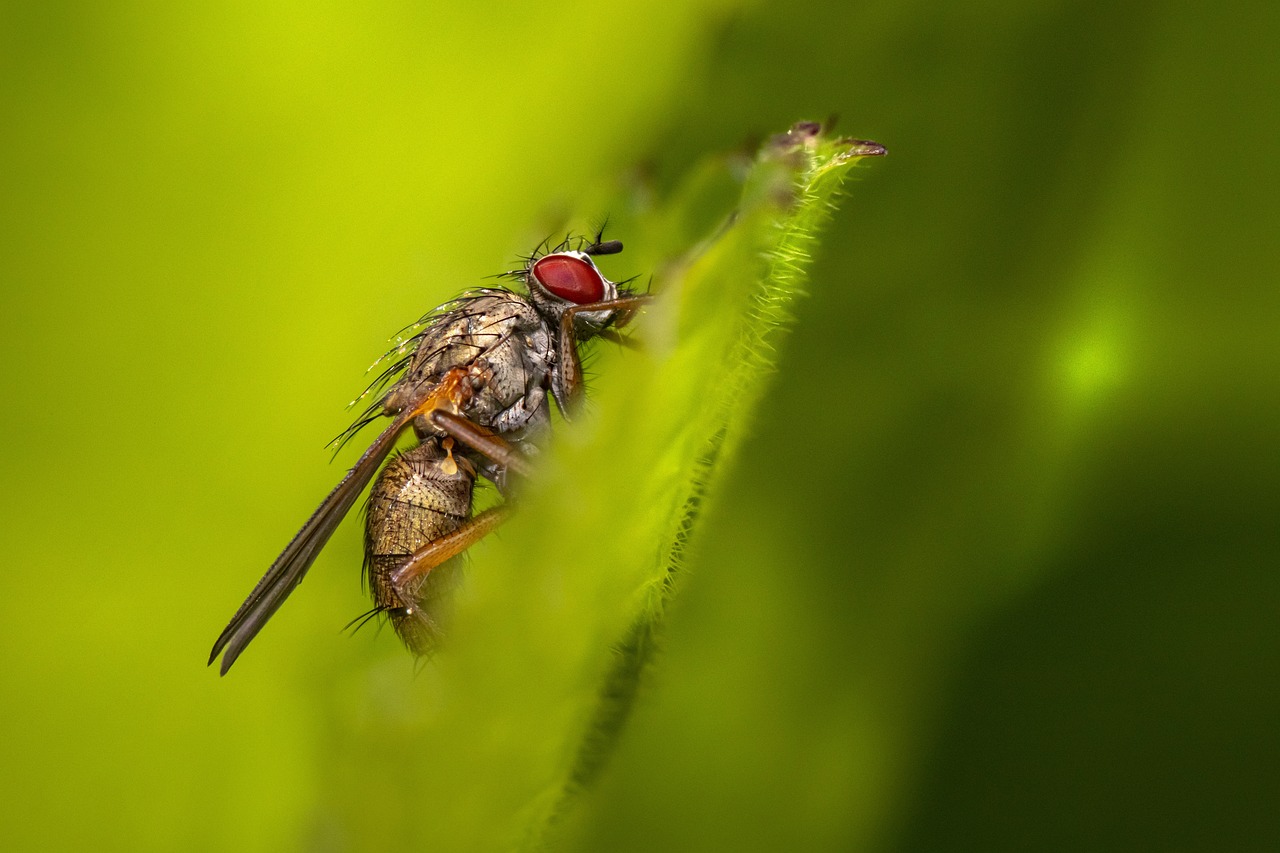The House Fly (Phaonia angelicae), a species within the family Muscidae, is often mistaken for the common housefly (Musca domestica) but differs in appearance, behavior, and ecological role. It is commonly found in Europe and prefers natural habitats compared to the more human-associated Musca domestica.
Physical Description:
- Size: Slightly larger than the common housefly, measuring approximately 7–10 mm in length.
- Coloration:
- Thorax: Dark brown or black with faint stripes and covered in fine bristles.
- Abdomen: A distinct reddish-brown or orange hue, sometimes with subtle iridescence depending on light conditions.
- Eyes: Large, compound eyes with reddish tones, prominent on the head.
- Wings: Transparent with well-defined veins, slightly rounded at the tips.
- Hair: The body has fine, dense bristles, contributing to its somewhat fuzzy appearance.
Behavior:
- Activity: Diurnal, primarily active during warmer months. They are adept fliers and spend much of their time hovering around vegetation and decaying organic matter.
- Feeding:
- Adults feed on nectar, decaying organic material, and sugary substances.
- Larvae (maggots) feed on decaying plant matter, contributing to nutrient recycling in the environment.
- Flight: Agile fliers that often hover near vegetation or in shaded areas.
Habitat:
- Preferred Environment: Unlike the Musca domestica, which thrives in human habitats, Phaonia angelicae is more commonly found in natural settings such as:
- Deciduous forests.
- Grasslands.
- Edges of wetlands.
- Microhabitats: They are often associated with damp, shaded areas and are drawn to decomposing plant matter.
Distribution:
- Found across Europe, particularly in temperate regions.
- It is also observed in parts of Asia, though it is less widespread compared to other fly species.
Life Cycle:
- Eggs:
- Laid on decaying organic matter, particularly rotting vegetation or compost.
- Eggs are small, white, and cylindrical.
- Larvae:
- The maggots hatch within a day or two and feed on decomposing plant material.
- They grow through several instars over a period of 7–10 days.
- Pupae:
- The larvae pupate in soil or under decaying material, transforming over 7–14 days.
- Adult:
- Emerges fully formed and is capable of reproduction within a few days.
- The total lifespan is typically 2–4 weeks, depending on environmental conditions.
Ecological Role:
- Decomposer: Phaonia angelicae plays an essential role in breaking down organic material, contributing to soil health and nutrient cycling.
- Prey Species: It serves as a food source for birds, spiders, and other insectivorous animals.
- Pollination: Adults visiting flowers for nectar inadvertently aid in pollination.
Conservation Status:
- The species is considered Least Concern due to its wide distribution and adaptability to various environments.
Interesting Facts:
- Natural Habitat Preference: Unlike many other flies in the family Muscidae, Phaonia angelicae rarely enters human dwellings, favoring natural settings over urban areas.
- Reddish Abdomen: The species’ reddish-orange abdomen helps distinguish it from more common, gray-bodied houseflies.
- Nutrient Recycling: By feeding on decaying plant matter, Phaonia angelicae plays a vital role in the ecosystem by speeding up decomposition and nutrient turnover.
Summary:
The House Fly (Phaonia angelicae) is a less familiar relative of the common housefly, distinguished by its reddish abdomen and preference for natural habitats. As a decomposer, it fulfills an essential ecological role, contributing to nutrient cycling and serving as prey for other species. Its unobtrusive behavior and preference for nature make it a fascinating species within the Muscidae family.
Visited 831 times, 5 visit(s) today
Views: 1291
Subscribe to the newsletter:
